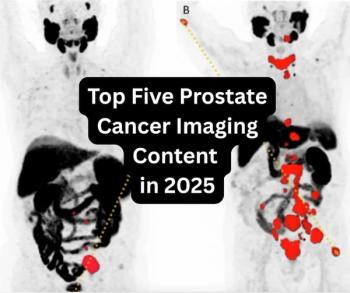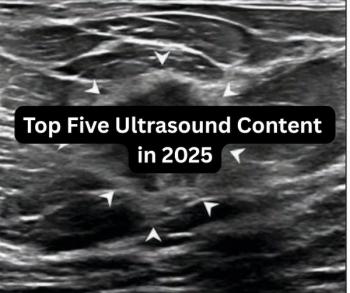Can magnetic resonance imaging (MRI)-based deep learning have an impact in enhancing the detection of lymph node metastasis in cases involving colorectal cancer?
For a new meta-analysis, recently published in Academic Radiology, researchers reviewed data from 10 studies to compare the use of deep learning and unassisted radiologist interpretation of MRI in a total of 2,132 patients with colorectal cancer.
For internal validation cohorts, the study authors found that MRI-based deep learning provided pooled sensitivity, specificity and an AUC of 89 percent, 85 percent and 93 percent, respectively, in comparison to 65 percent, 74 percent and 76 percent, respectively, for unassisted radiologists.
Deep learning assessment in external validation testing offered 75 percent sensitivity, 81 percent specificity and an 84 percent AUC, according to the researchers. Acknowledging that more robust external validation studies are necessary, the study authors maintained that the diagnostic capabilities of deep learning offer potential adjunctive triage utility to facilitate workflow efficiencies.
“ … (Deep learning) systems could serve as a first-pass reader, prioritizing suspicious cases and generating preliminary reports for radiologist confirmation, thereby streamlining workflow and reducing time to diagnosis. Alternatively, they could function as a concurrent reader, providing real-time decision support by highlighting regions of concern during radiologist interpretation,” wrote lead study author Fenggua Wang, M.D., who is affiliated with the Department of Radiology at Wuhan Asia General Hospital in Wuhan, China, and colleagues.
Three Key Takeaways
- Deep learning outperformed unassisted MRI interpretation. For detecting lymph node metastasis in colorectal cancer, deep learning demonstrated pooled internal validation sensitivity, specificity, and AUC of 89 percent, 85 percent, and 93 percent, respectively. This was substantially higher than unassisted radiologist performance.
- Potential clinical utility as a triage or concurrent reader. MRI-based deep learning models could streamline workflow by prioritizing suspicious cases or providing real-time decision support during radiologist interpretation.
- Comparable specificity to senior radiologists. While deep learning showed higher sensitivity and AUC, it did not significantly surpass experienced radiologists in specificity, underscoring the adjunctive role of AI in clinical practice.
While deep learning interpretation offered significantly higher sensitivity and AUC in comparison to both junior and senior radiologists for detecting lymph node metastasis, the researchers noted there was no statistically significant difference in specificity between deep learning interpretation and senior radiologist assessment.
“This phenomenon could be attributed to the ability of (deep learning) algorithms to extract clinically relevant radiomic features from large datasets, thereby providing higher diagnostic performance, particularly in cases where junior radiologists may lack sufficient experience,” added Wang and colleagues. “In contrast, senior radiologists have stronger image interpretation skills and greater clinical experience. They can evaluate complex benign imaging features more effectively, and (deep learning) algorithms may not show a clear performance advantage in such cases.”
(Editor’s note: For related content, see “Meta-Analysis Shows Merits of (68Ga)Ga-FAPI-04-PET for Assessing GI Tumors and Metastases,” “Consensus Recommendations on MRI, CT and PET/CT for Ovarian and Colorectal Cancer Peritoneal Metastases” and “Diffusion-Weighted MRI and Neoadjuvant Chemotherapy for Rectal Cancer: What New Research Reveals.”)
In regard to limitations with the meta-analysis, the authors acknowledged that retrospective research comprised the majority of the reviewed studies and noted they limited the analysis to the highest performing deep learning models from each study. In addition to the majority of reviewed studies limiting cohorts to rectal cancer patients, the researchers conceded that most of the study cohorts were comprised of Chinese people, limiting extrapolation of study findings to broader populations.





























